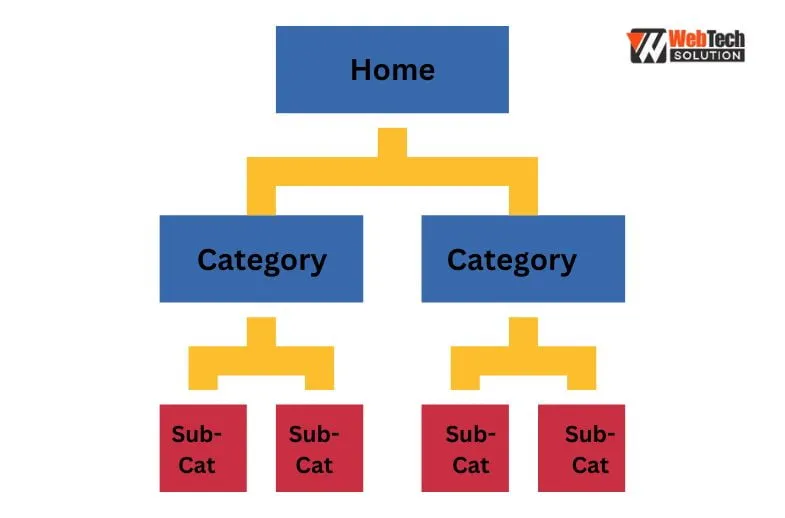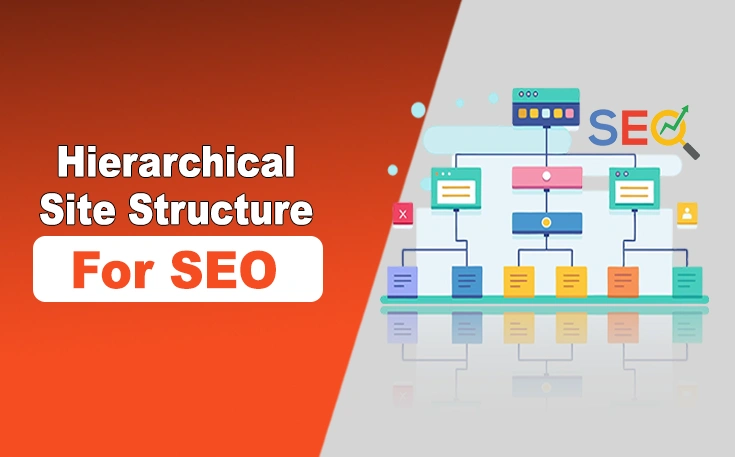Search engine optimization remains necessary for achieving website success in the dynamic realm of online presence. When asked about the arrangement of a website, Gary Illyes from Google emphasized the advantages of employing a hierarchical site design for optimizing search engine performance.
They outlined situations where a flat site structure is deemed acceptable. Gary described the compelling reasons supporting both the benefits of a hierarchical site layout and the appropriateness of a flat site structure for simple websites.
This blog post will explore why Google recommends a Hierarchical site structure for SEO & how it impacts website rankings.
What is Site Structure, and Why is it Important?
The organization of content on a website is referred to as site structure. It encompasses the arrangement and relationships among various elements, such as pages, categories, topics, and other components within the website’s hierarchy.
Establishing a well-organized site structure is crucial to facilitate seamless user navigation and enable search engines to crawl your content efficiently. Utilizing elements such as taxonomies (e.g., categories and tags), breadcrumbs, internal links, navigation menus, and structured URLs play a key role in organizing your website effectively.
Structuring your website in a manner that facilitates clear comprehension of the significance of each page by search engine crawlers improves the likelihood of achieving higher rankings in search engine results pages (SERPs).
Here are the key reasons to emphasizing the significance of site structure in SEO:
- Facilitates search engines in comprehending the relevance of content.
- Enhances user navigation, making locating desired information on the site simpler for visitors.
- Guards against SEO issues like duplicate content or orphaned pages.
- Elevates online visibility by optimizing the crawlability of the website
Hierarchical Site Structure For SEO
In site structure, a hierarchy refers to the systematic organization of a website, arranging content from the broadest level of the site’s theme to progressively more detailed subtopics.
The homepage occupies the top tier of the hierarchy, with categories and webpages descending from it, gradually delving into more specific subject matter in an ideally structured hierarchy.
This organizational approach allows publishers to establish categories based on subjects, formerly known as “themes” or “topic themes” in SEO terminology, which are now commonly referred to simply as topics.
For instance, the homepage, such as Science, maybe a focal point for the entire website. Subsequent tiers can then delve into categories like Botany, Astronomy, Psychology, Geology, and Meteorology.
Read Also: Tips for Choosing the Best Rank Tracking Software

Benefits of Hierarchical Site Structure For SEO
Within a hierarchical framework, content is systematically categorized to facilitate user navigation on the website. This organizational approach proves advantageous for websites with extensive content to confirm an efficient means of locating specific information.
For instance, in a blog dedicated to SEO, content could be classified as SEO tips, SEO tools, SEO strategies, and SEO trends.
Here, we emphasized the reason why Google recommends a Hierarchical site structure For SEO:
1- Indexation and Crawlability
Search engines employ web crawlers to explore and index the extensive content across the internet. A hierarchical framework facilitates efficient traversal of a website for these crawlers. When the structure of a website is well-defined and orderly, search engine bots can efficiently index its pages.
This ensures the website’s content is accurately categorized and readily accessible for pertinent search queries.
2- Keyword Relevance and Targeting
A hierarchical arrangement enables the strategic positioning of keywords. Organizing content into clear sections and subsections enables website owners to associate specific keywords with pertinent topics.
Improving the semantic clarity of the website not only enhances its overall understanding but also assists search engines in comprehending the contextual significance of each page, ultimately leading to an enhancement in search rankings.
3- Enhancement User Experience
The organization of a website in a hierarchical structure reflects the natural way in which users navigate through information. Organizing information in a coherent hierarchy enables visitors to locate the information they are looking for easily.
The simplified user interface enhances the overall user experience, extending visit durations and reducing bounce rates. These are crucial factors in assessing a website’s quality by search engines like Google.
4- Internal Linking Opportunities
The hierarchical framework supports a strong internal linking strategy. Enhancing overall SEO performance is achievable by strategically interconnecting related content within the same branch of the hierarchy, thereby dispersing link authority across the website.
Internal linking creates thematic associations among pages, strengthening the topical significance as perceived by search engines.
5- Site Architecture and PageRank Flow
PageRank, the algorithm developed by Google to assess the significance of web pages, circulates within a website through internal links. This flow is optimized by a hierarchical structure, ensuring a more even distribution of PageRank across pages.
This guarantees that each element of the website enhances its overall authority, indicating to search engines that the site is a valuable and authoritative resource in its specific niche.
6- Mobile Friendly Adaptability
As mobile device usage continues to rise, Google emphasizes websites optimized for mobile accessibility. A well-organized hierarchical framework forms a sturdy base for responsive design, guaranteeing a smooth user experience across various devices.
The importance Google places on prioritizing mobile-first indexing underscores the necessity of adaptability for sustaining and enhancing search rankings.
To Wrap Up
Google advises using a hierarchical site structure to ensure users receive the most pertinent and systematically organized information. Aligning a website’s structure with user expectations and search engine algorithms establishes a robust foundation for achieving SEO success for site owners.
The systematic organization of content facilitates clear comprehension of a website’s relevance, contributing to improved indexation and crawlability. In the ever-changing digital environment, adopting and incorporating a hierarchical framework remains a wise approach for those seeking success in the fiercely competitive world of online presence.





